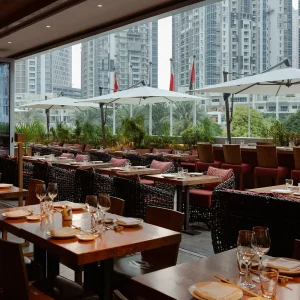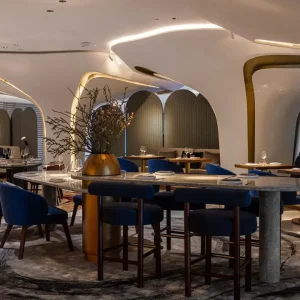Sharjah is a city that takes pride in its rich culture and deep connection to the sea. Long before the rise of skyscrapers and shopping malls, the people of Sharjah depended on the ocean for their daily lives. They sailed, fished, dived for pearls, and traded with nearby regions. Today, all of that history has been carefully preserved in a special place — the Sharjah Maritime Museum.
Located in the Al Khan area, near the Sharjah Aquarium, the Sharjah Maritime Museum is a must-visit for anyone curious about the region’s seafaring past. Whether you’re a history buff, a student, or just someone looking for a unique experience, this museum offers a glimpse into a way of life that shaped Sharjah into what it is today.
A Journey Through Time
The moment you step into the museum, you’re taken on a journey through centuries of maritime history. The exhibits are thoughtfully arranged, starting from the earliest days of sea exploration in the Gulf region. The museum doesn’t just show you boats — it tells you the stories behind them.

There are old navigation tools, detailed boat models, traditional fishing equipment, and even pearl diving gear. Each display is labeled in both Arabic and English, making it easy for all visitors to understand the significance of each piece.
Incredible Boat Models

One of the most striking parts of the museum is the collection of traditional boat models. These miniature wooden vessels are handcrafted with great detail and show the different types of boats used by Emiratis over the years. From small fishing boats to large dhows used for trading, the models represent the skills of old boatmakers and how sea travel evolved.

Some popular boat types you’ll see include:
- Al-Banoosh – a small, fast boat often used for fishing
- Al-Sambook – a larger sailing boat, typically used for trade or pearl diving
- Al-Boom – one of the biggest and most famous boats in the region, used for long-distance voyages
Each model includes information on how it was built, what it was used for, and the crew it typically carried. Visitors can also watch short videos showing how real-life versions of these boats are made using traditional tools and methods.
Pearl Diving and Fishing Life
Before oil was discovered, pearl diving was one of the most important industries in the UAE. At the Sharjah Maritime Museum, visitors can explore a section dedicated entirely to this once-thriving trade. You’ll see the tools divers used, like nose clips, finger guards, and weighted ropes, which helped them dive deep into the sea to collect oysters.
There are also displays showing how pearls were sorted, weighed, and traded. Some of the exhibits include photos of divers from the early 1900s, giving you a human connection to the past.
Fishing was also a key part of Sharjah’s coastal life. The museum has displays of old fishing nets, hooks, and traps, along with information on the types of fish that were caught in the area. You’ll even find old maps showing fishing zones and trade routes taken by fishermen and traders.
Life at Sea
Sailing wasn’t just about catching fish or collecting pearls. It was a full lifestyle. The museum showcases the daily lives of sailors, including the food they ate, the clothes they wore, and even the songs they sang while rowing. These traditional sea songs, called “shilat”, were used to keep rhythm and lift the crew’s spirits during long voyages.
You can listen to recordings of these songs through interactive exhibits, and even try your hand at tying some of the complex sailor’s knots.
Modern Touch with Interactive Exhibits
Even though the museum focuses on history, it has modern elements to keep visitors engaged. There are interactive screens, educational games for kids, and short films that explain more about life at sea.
Children can enjoy hands-on exhibits where they can “build” a boat, try virtual pearl diving, or explore the sea through touch-screen maps. It’s a great place for school trips or family outings.
Architecture and Location
The museum building itself is beautifully designed, combining traditional Arabic architecture with modern interiors. Large glass windows give you views of the nearby sea, reminding visitors of the very waters that once made Sharjah a hub of trade and culture.
Its location near Sharjah Aquarium makes it perfect for a day trip. Visitors often pair both attractions together. After exploring the sea’s history at the museum, you can head next door to see the marine life that still lives in the Gulf today.
Why Visit the Sharjah Maritime Museum?
Here’s why you should make time to visit:
- Cultural Experience: Learn about a way of life that existed for centuries before modern times.
- Educational Value: Perfect for students, history lovers, and tourists wanting to understand the region.
- Family-Friendly: Plenty of interactive elements to keep kids entertained.
- Affordable Entry: Ticket prices are low, and children under a certain age enter for free.
- Photogenic Setting: Great for photography with its boat models, traditional décor, and sea views.
Opening Hours and Tickets
The museum is open Saturday to Thursday from 8:00 AM to 8:00 PM, and on Fridays from 4:00 PM to 8:00 PM. Tickets are reasonably priced — adults pay a small fee, while children often enjoy discounted or free entry.
Guided tours are available upon request, and the museum shop sells souvenirs, including books, small boat models, and sea-themed gifts.
Final Thoughts
The Sharjah Maritime Museum is more than just a collection of old boats. It’s a tribute to the brave men and women who built their lives around the sea. Their stories, traditions, and tools are carefully preserved for future generations to admire and learn from.
If you’re in Sharjah or planning a visit, don’t miss this gem. It’s a peaceful, educational, and deeply cultural experience that helps you understand how the sea shaped not only Sharjah but the entire region.
Also read: A Hidden Gem in Sharjah: Discover the Beauty of Arabic Calligraphy














